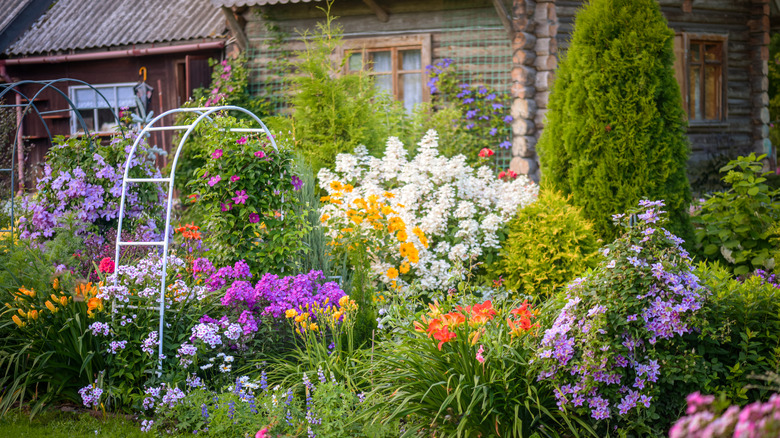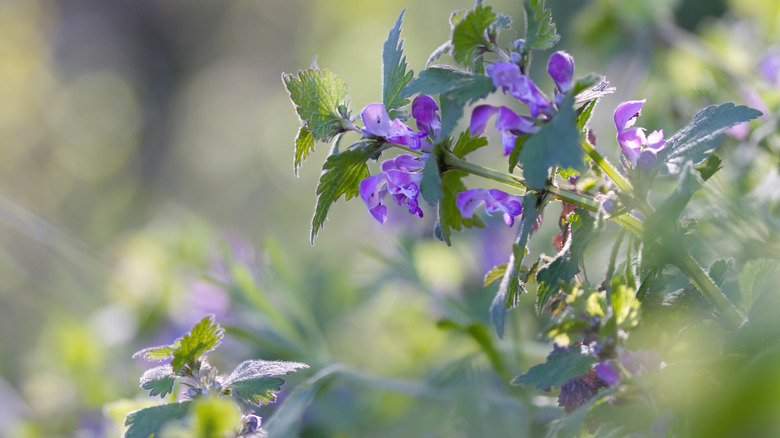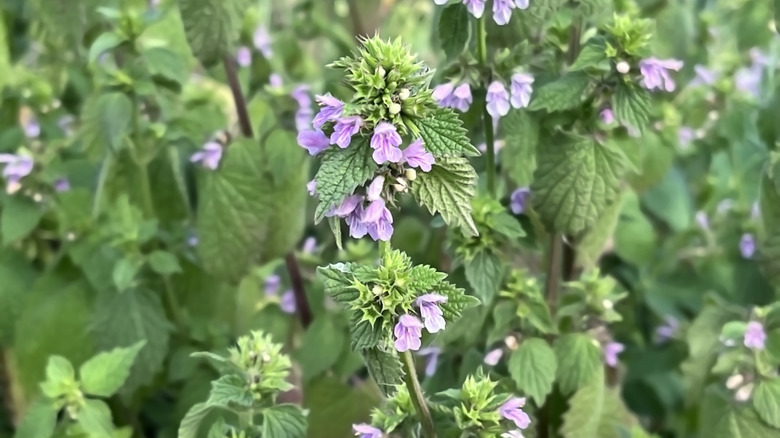Grow This Gorgeous Ground Cover Plant For Purple Flowers In The Sun Or Shade
We may receive a commission on purchases made from links.
Ground cover plants are a great addition to any garden, providing beautiful foliage and even choking out unwanted weeds. A plant qualifies as ground cover if it is low growing, with heights ranging from less than an inch up to four feet. Grass is probably the most widely known ground cover. However, it can be difficult and time consuming to maintain, unlike other low-maintenance groundcover plants, such as Lamium maculatum, aka spotted deadnettle.
While its name may imply otherwise, spotted deadnettle is very much alive. The plant's colloquial name refers to its resemblance to Urtica dioica, or stinging nettles, though spotted deadnettle has no sting. Therefore, it is called "dead." Belonging to the mint family, spotted deadnettle remains under six inches in height and works well in a variety of environments, thriving in USDA Plant Hardiness Zones 3 through 8. In mild climates, it becomes an evergreen plant and displays vibrant purple flowers from late spring to early summer. Spotted deadnettle (also called Purple Dragon) is not too picky about sun exposure either, growing well in partial sun and full shade.
Cultivating spotted deadnettle
If you would like to add spotted deadnettle to your garden, avoid common mistakes when growing this ground cover by following the proper steps when planting and caring for your plant. While deadnettle is hardy, tolerating most soil types, it grows best in a shadier place that is protected from high winds. You can also use it as a transition plant between areas of shade and sun, where other plants might not survive. When planted among taller perennials like goatsbeard or Japanese forest grass, deadnettle makes for a great space-filler. However, be mindful when growing deadnettle near other short plants. Its growth could smother plants and overrun your garden. As with many garden plants, the ideal time for planting deadnettle would be in the spring or fall.
Once you have chosen a spot for your deadnettle, dig a hole that matches the depth of the plant's original container but has an additional six inches of width. Settle your plant into its new home, making sure the root ball remains visible as you refill the hole with soil. You don't need to prune it, as it will grow to cover the ground around it. During the first six weeks, water the deadnettle every few days until its root system is established, then cut back to around once a week.
Keeping your spotted deadnettle healthy
After planting, the spotted deadnettle will not require too much attention, though it can fall prey to pests or disease. Common pests that seek deadnettle include whiteflies and aphids. Since deadnettle is low growing, it provides these insects with suitable shelter and a convenient food source. They can be removed through spraying the leaves with plant-safe insecticide such as Earth's Ally 3-in-1 Plant Spray. And watch out for the deadnettle leaf beetle, a small insect with a striking green-blue iridescent coloring to their carapace. As the name implies, they love to munch on deadnettle plants but can be banished from your garden through either hand-picking or insecticide.
Spotted deadnettle is a great low-maintenance addition to complete your stunning flower garden. Even when its vibrant purple flowers are not blooming, its silvery leaves are just as gorgeous. Whether you use it alone or to fill in the gaps between other plants, you will not be disappointed in this ground cover's beauty.


